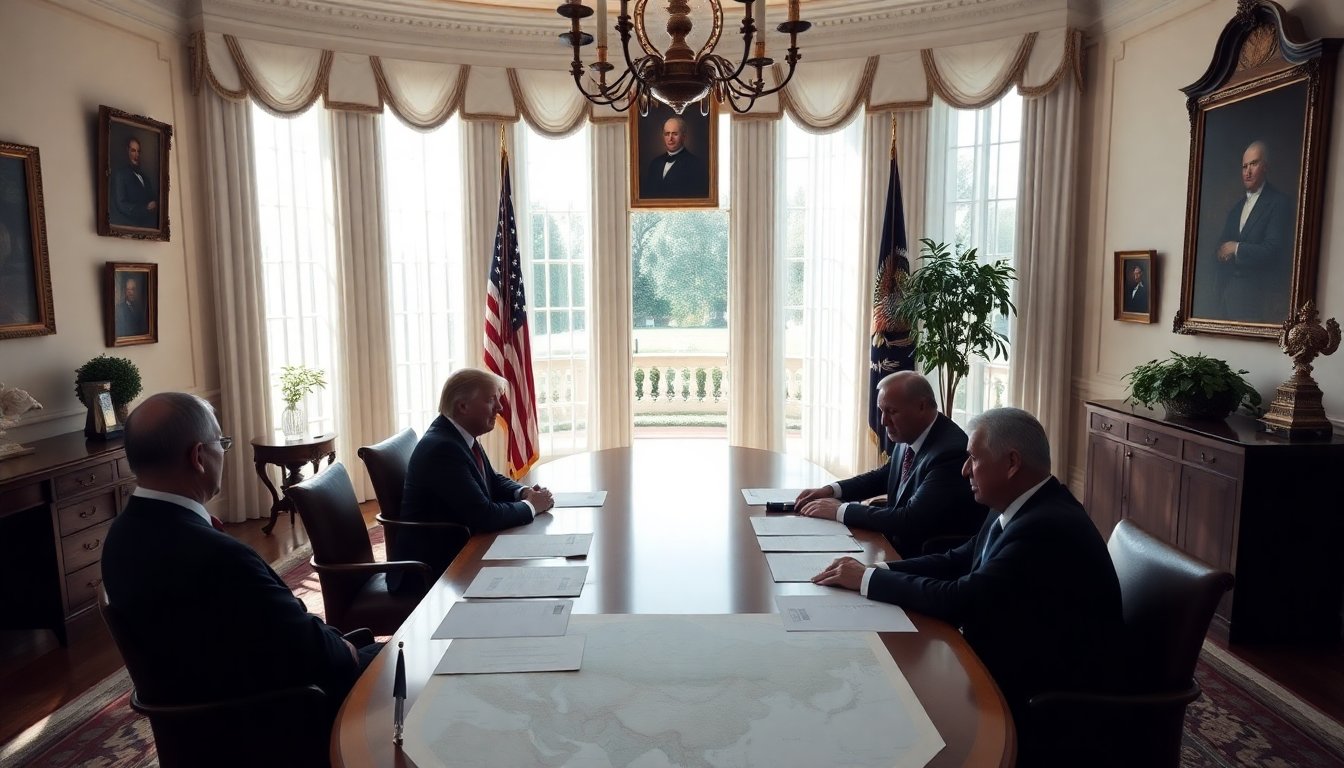Table of Contents
In a pivotal move to strengthen America’s geopolitical stance, President Donald Trump convened a summit with the heads of five Central Asian nations at the White House. This gathering, known as the C5+1 summit, aims to bolster U.S.
influence in a region rich in resources that have traditionally been under the sway of Russia and, increasingly, China.
During the meeting, Trump emphasized the importance of critical minerals for the U.S. economy, aiming to enhance and secure supply chains through strategic international partnerships.
This summit is particularly significant as Washington seeks to diversify its sources of these essential resources, which include uranium, copper, and rare earth elements.
The significance of Central Asia’s resources
Central Asia is recognized as a resource-rich region, with its mineral wealth increasingly appealing to Western nations.
Former President Trump highlighted this potential, stating that “Central Asia is a priority for our administration, and we are committed to strengthening our partnerships with Kazakhstan, Kyrgyzstan, Tajikistan, Turkmenistan, and Uzbekistan.” The region’s deposits of rare earth metals are especially significant for the production of high-tech devices, including smartphones and electric vehicles.
Competition for mineral wealth
The summit occurs amid intensifying competition for Central Asia’s vast mineral resources. As global demand for these materials increases, the United States seeks to establish new agreements to access these essential supplies while decreasing dependence on China and Russia.
With China controlling about 70% of the world’s rare earth mining and processing, the U.S. aims to secure alternative sources.
Trump emphasized that his administration has recently made progress in forming agreements with allied nations to bolster American economic security.
He pointed out that a key focus of the summit would be discussions around potential trade agreements related to critical mineral resources.
Strategic partnerships and economic ties
The C5+1 platform, established in, focuses on enhancing cooperation across several areas, including economic development, energy security, and regional stability. Discussions at the upcoming summit are anticipated to center on strengthening trade relationships and tackling shared challenges posed by geopolitical rivals.
Although the Trump administration is actively pursuing these partnerships, experts warn that the United States may encounter difficulties competing with the long-standing relationships between Central Asian countries and Russia and China. Shairbek Dzhuraev, president of the independent research institute Crossroads Central Asia, highlighted that these nations have historically favored their powerful neighbors for trade agreements.
Recent developments in trade agreements
The United States has recently entered into several significant trade agreements with Central Asian nations, underscoring its growing interest in the region. Uzbekistan has finalized an $8 billion deal with Boeing for the purchase of Dreamliner aircraft, which is anticipated to generate thousands of jobs in the U.S. Similarly, Kazakhstan has secured a $4.2 billion agreement with Wabtec for locomotive components, representing a major investment in its infrastructure.
These agreements reflect the U.S. commitment to fostering robust economic ties in Central Asia while competing for essential resources. The region’s potential for rare earth metals is gaining traction, particularly following new discoveries in Kazakhstan that indicate substantial deposits of critical rare earth elements.
Looking ahead: A complex geopolitical landscape
Future of U.S.-Central Asia relations
The conclusion of the recent summit has highlighted the ongoing discussions regarding U.S.-Central Asia relations. The region’s abundant natural resources present an opportunity for the United States to strengthen its strategic influence, particularly amid increasing competition from Russia and China. However, the complexities inherent in these relationships must be carefully considered.
The Trump administration faces the challenge of fostering partnerships with Central Asian nations while acknowledging their existing ties to neighboring powers. As the geopolitical landscape evolves, Central Asia is positioned as a critical player in the global competition for resources, creating both opportunities and challenges for U.S. foreign policy.





